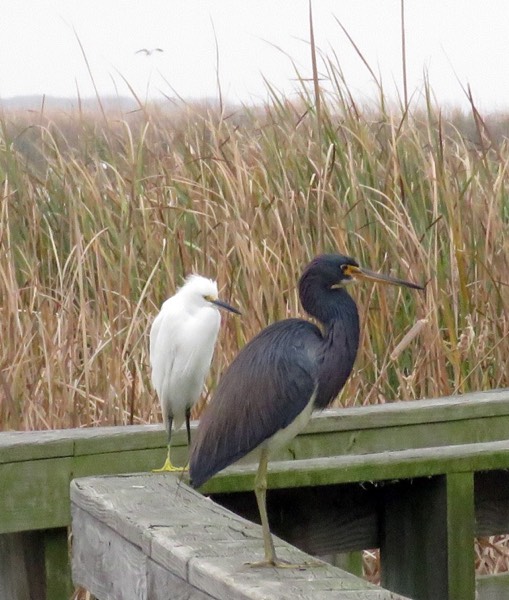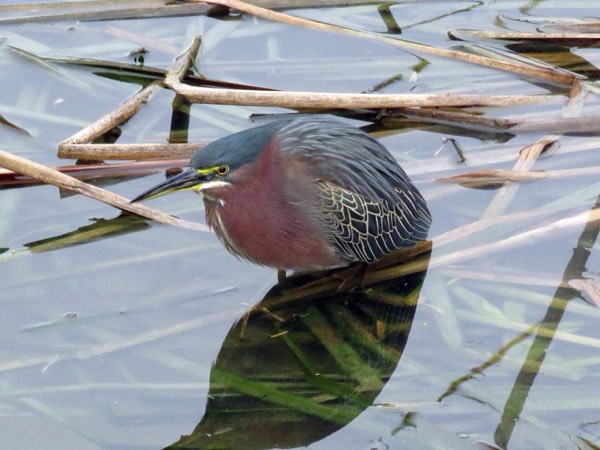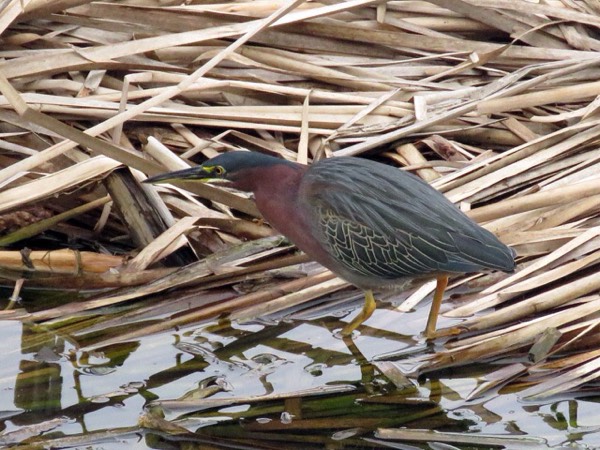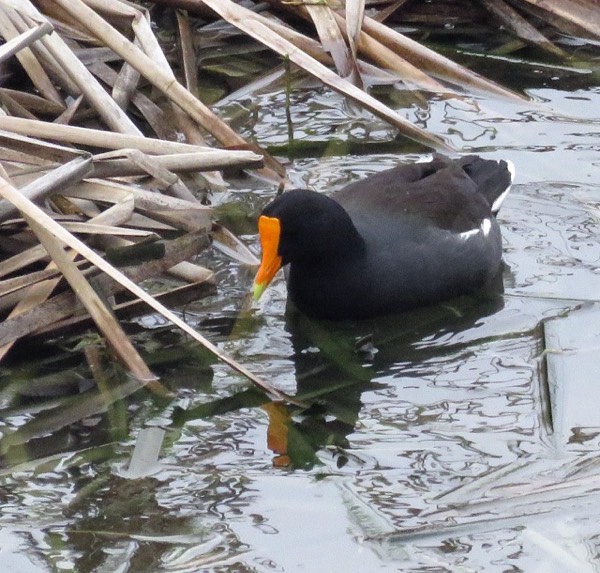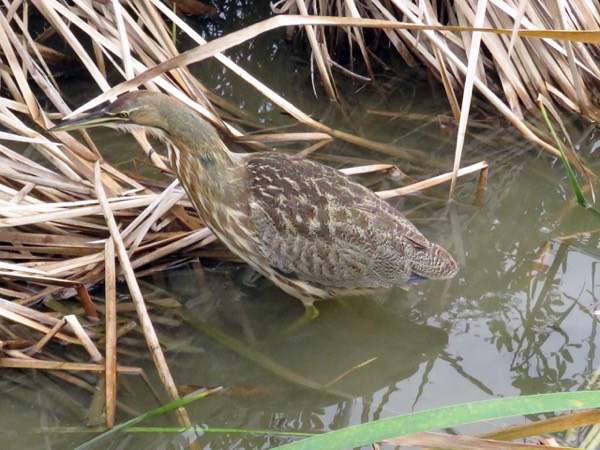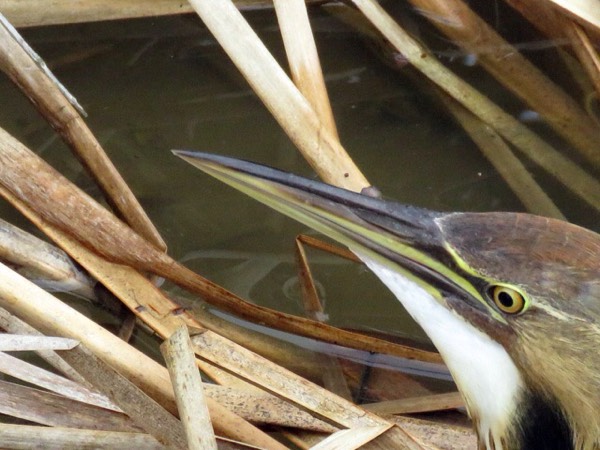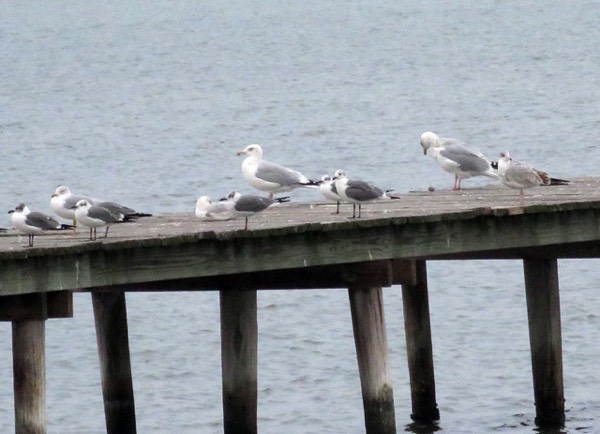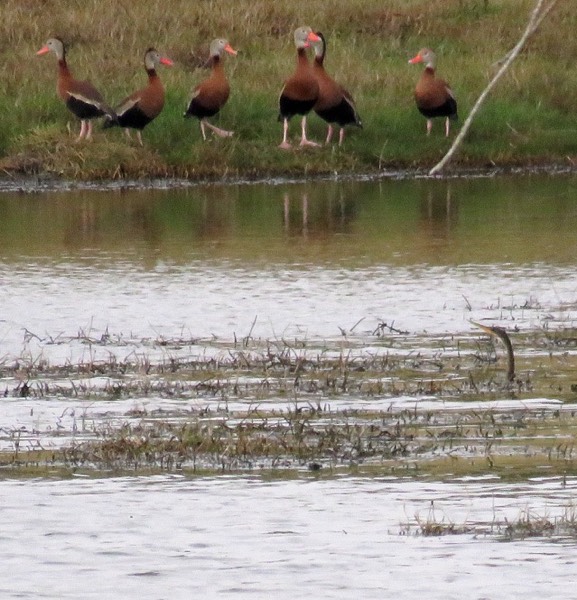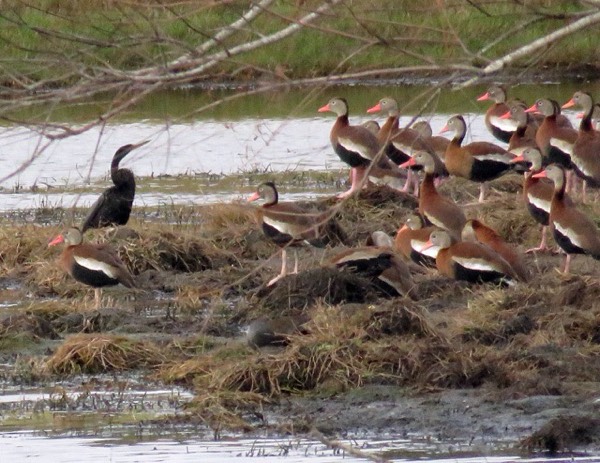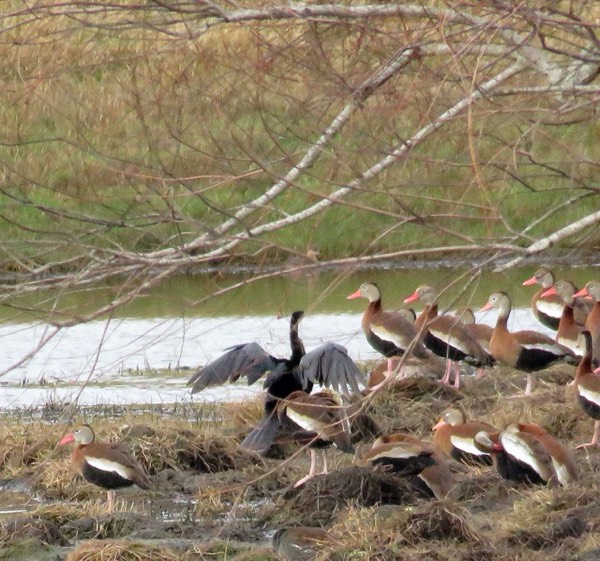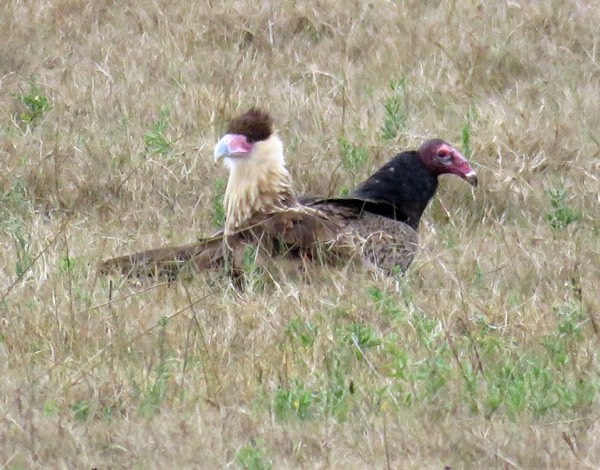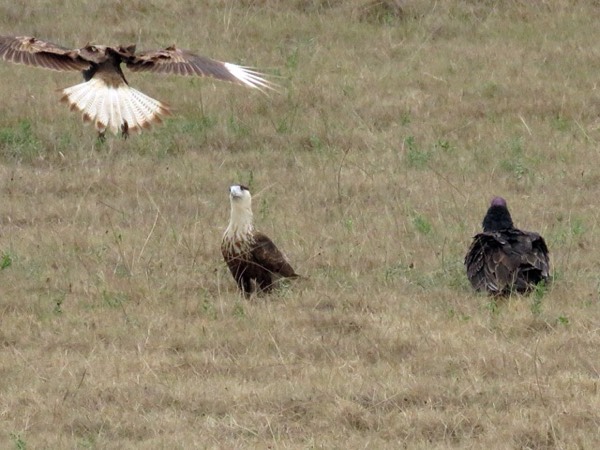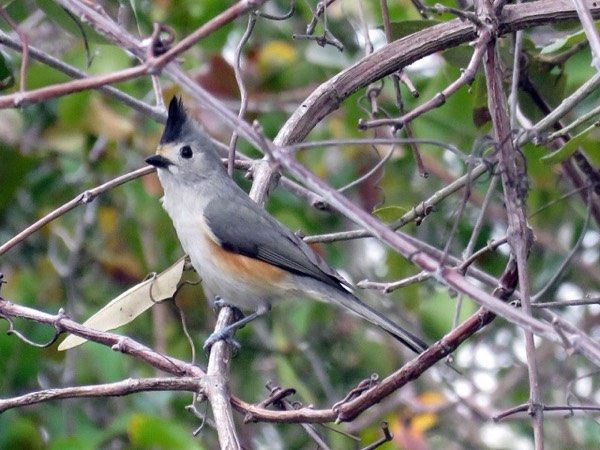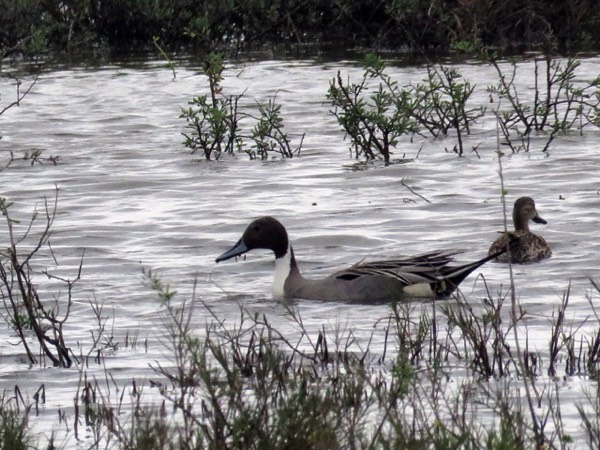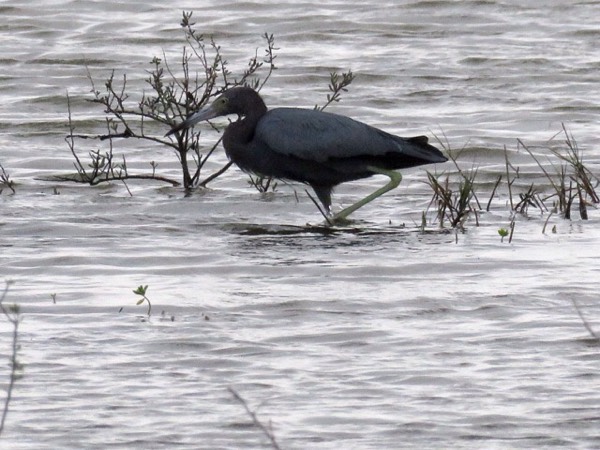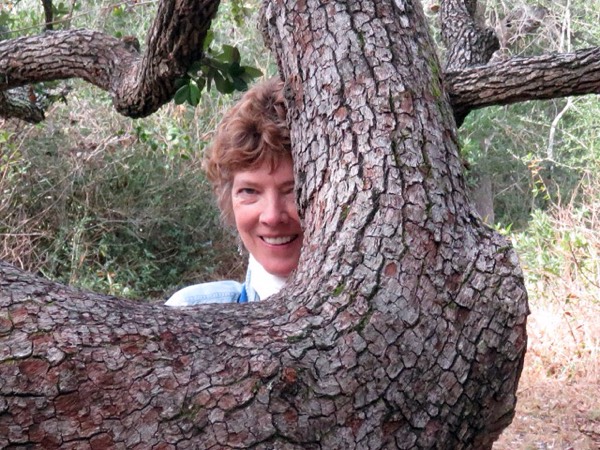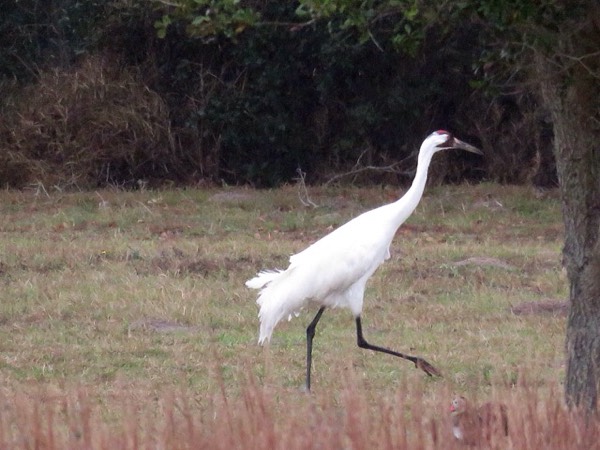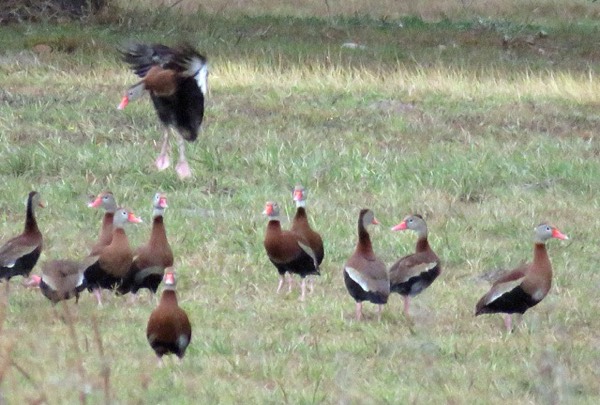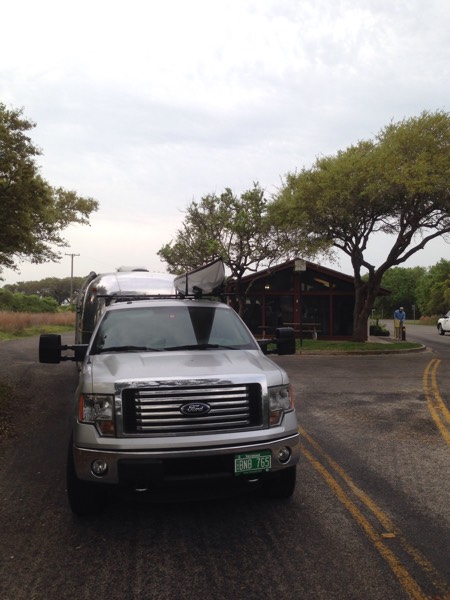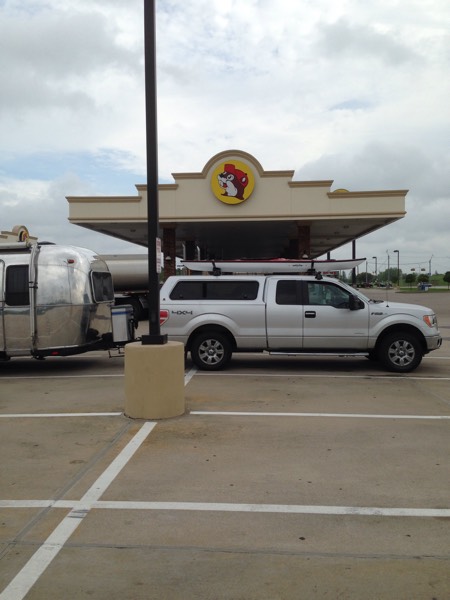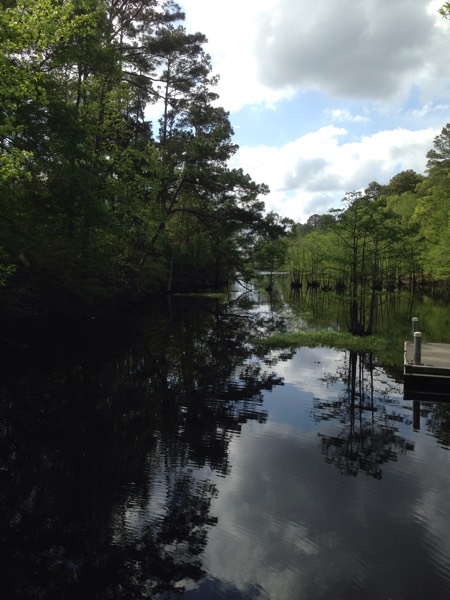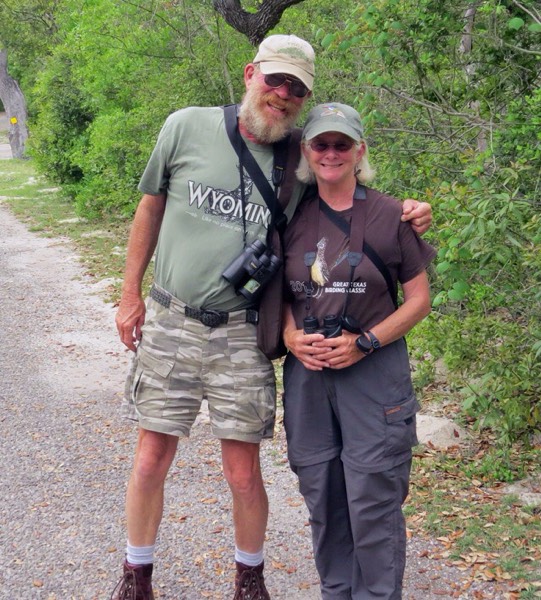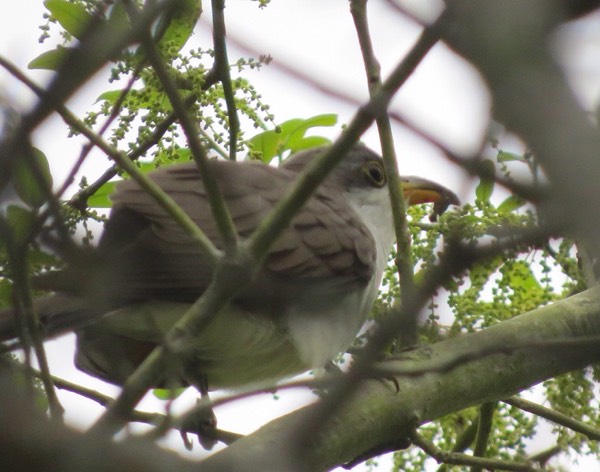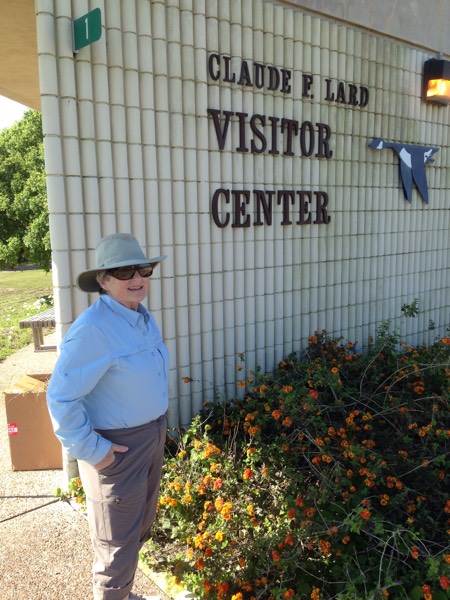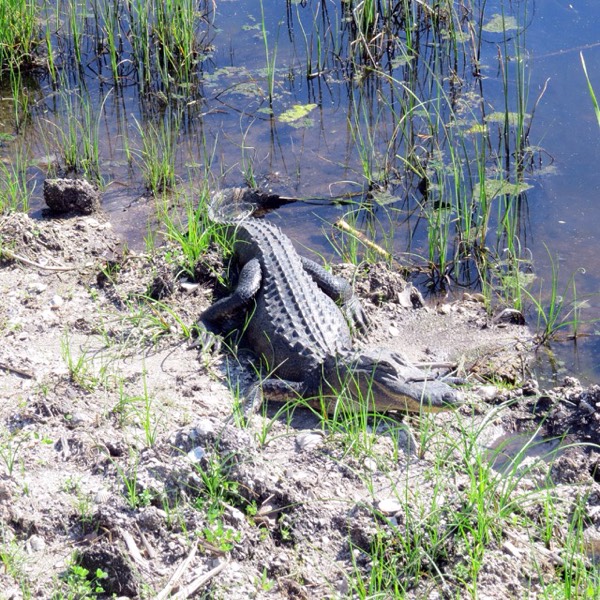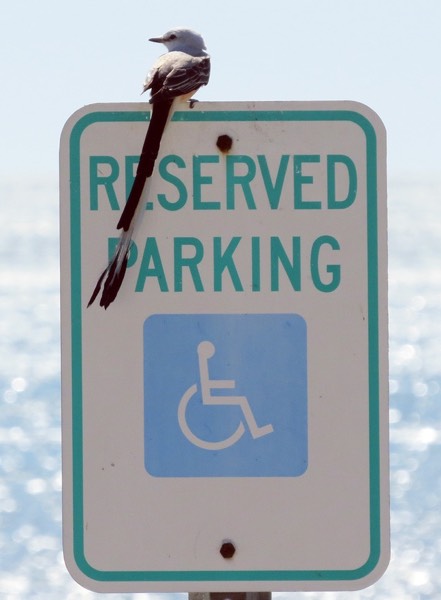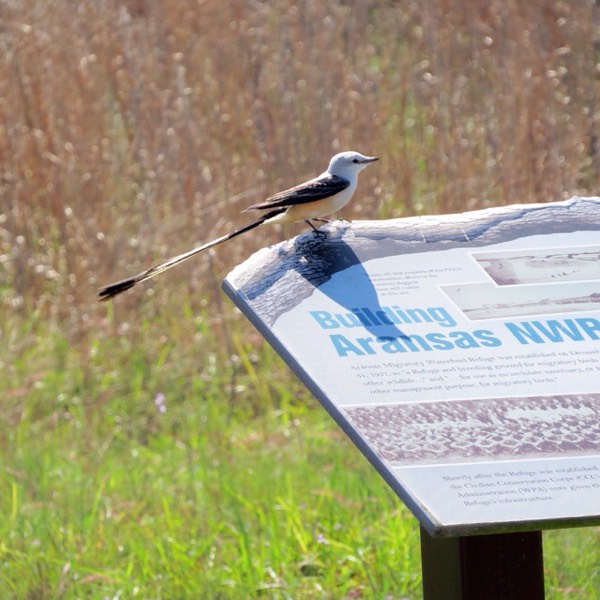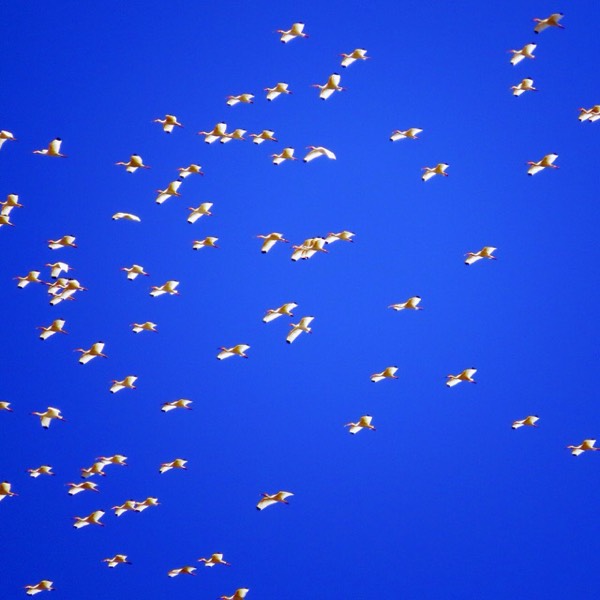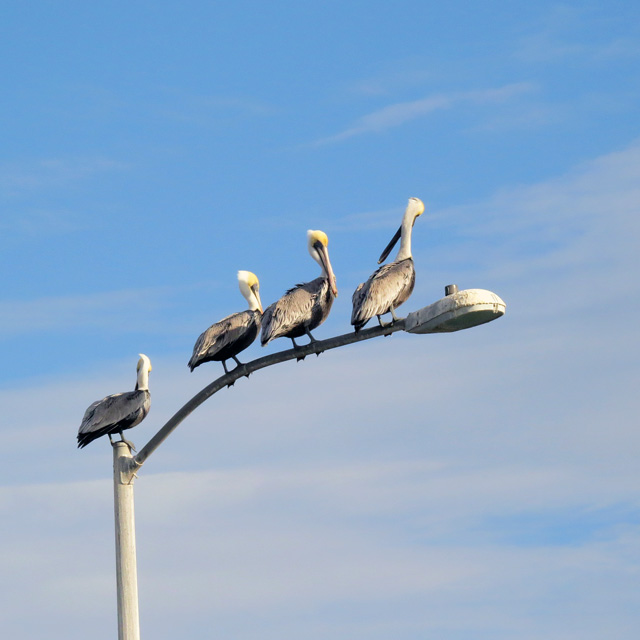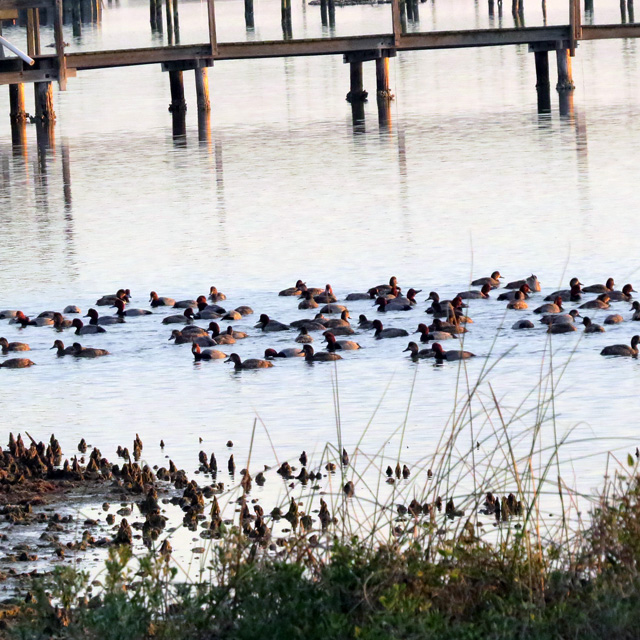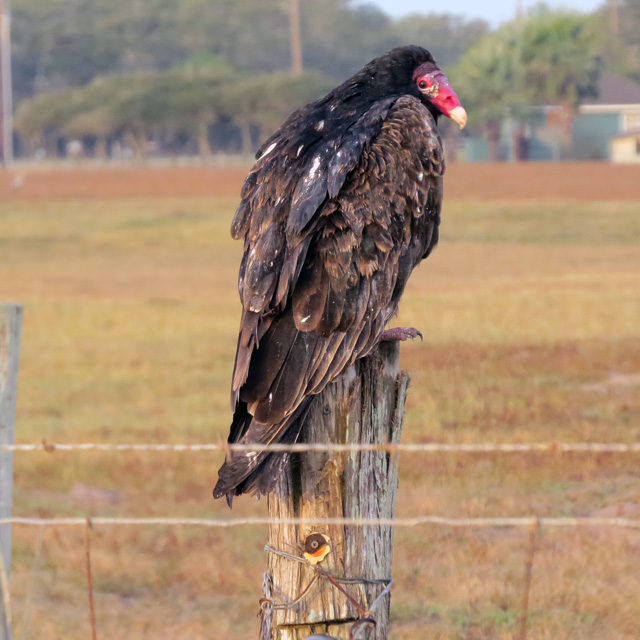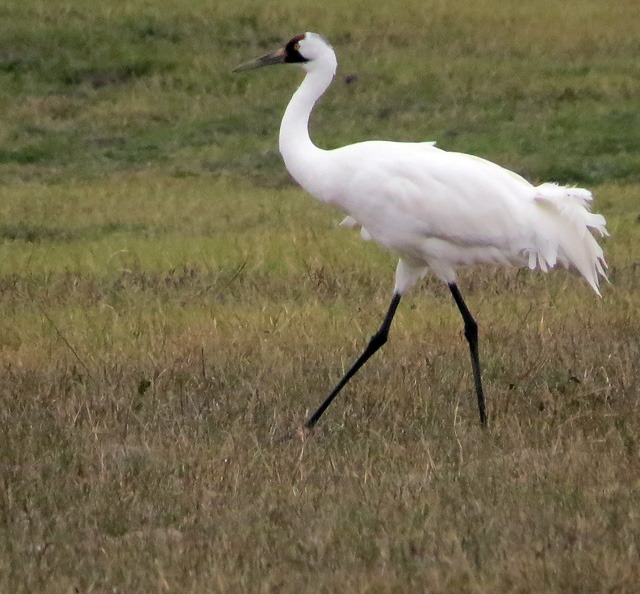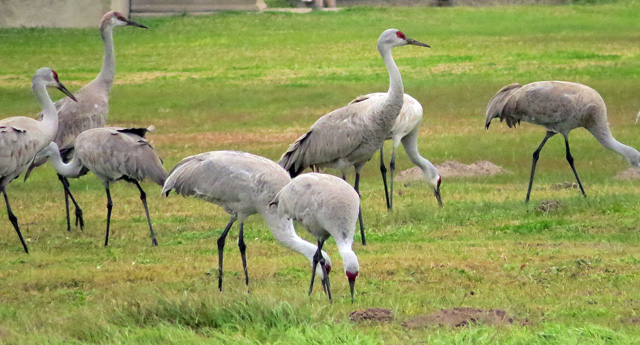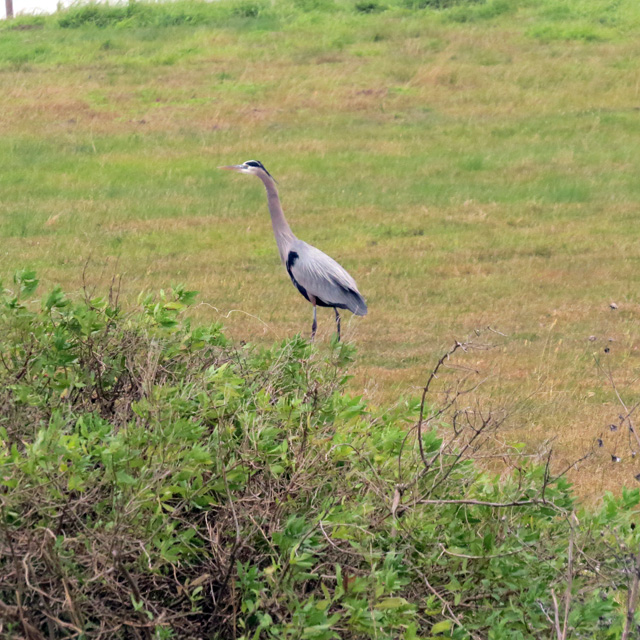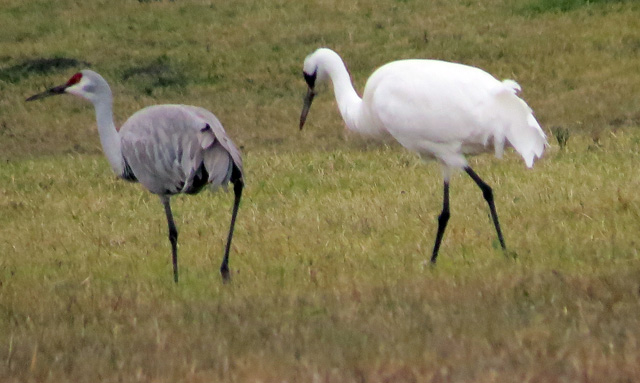Mary and I loaded up Penny and left early for some back road birding north of Rockport. We started tallying gulls and “telephone line” birds and soon were on a Farm-to-Market road heading toward the hamlet of Bayside. These “farm roads” in Texas are usually narrow with a speed limit of 70 and lots of white pickup trucks in a hurry. Not too conducive to birding although usually there is a wide shoulder (or ditch.)
We pulled off on a little narrow road alongside Copano Bay called Egery Flat aka Mosquito Alley and were immediately confronted with a small mudflat/pond with hundreds of shorebirds. As we tried to sort through Dowitchers, Dunlins, Willets some Black-legged Stilts, and lots of sandpipers, I was wishing that I had an expert along. Just ahead, we saw and photographed a Reddish Egret – a white morph in breeding plumage – which turned out to be a new bird for each of us. It is neat to watch them fish, stirring up the water with their feet and then grabbing stuff they’ve scared.
 |
| The American Golden Plovers were in his pasture |
As the road turned to dirt, we saw several birds flush out of the grass and settle. I knew right away that they were one of the species we were after – and it turned out that they were American Golden Plovers, passing through on their way north. I got out my scope and we got some good looks, an so-so photos. As I watched, a steer (seen above) watched us and started plodding our way. Time to move on.
 |
| American Golden Plover |
It was a pretty spring day with no one around on this straight back road so we let the dog go and walked for a while. The temperature was about 80 with a light breeze and blue skies with sparrows and meadowlarks rising from the fields. Of course, the mosquitoes found Mary.
We passed another flock of plovers and then, just as we were nearly done with the loop, Mary spotted more birds. We pulled over, looked at them through the binos, and took some photos. About then, a deputy sherriff pulled alongside asking “Everything ok?” I guess the red Vermont truck with kayak on top looked pretty unthreatening and he was off. (I learned later that the birds were migrating Upland Sandpipers, another new one for us.
 |
| Upland Sandpiper |
One of the purposes of the outing was to check out a local eating place which friends had raved about. Crofutt’s Sandwich Shop & Bakery calls itself “An Oasis in a Junk Food Desert” and it is. Plain looking and frequented by local oil and ranch workers, it has been running for 33 years. We had the Shrimp Po-Boy and they were great. I had to eat mine next to the truck since Penny had an anxiety meltdown and started pulling the rubber stripping from the door .. again. Washed down with iced tea, with a couple of decadent cookies for later, it was quite a feast.
We returned in time for a short nap and then Penny and I drove to the vet for a last checkup. Her leg is nearly there and after a quick check, the doc said goodbye giving her a few treats for the road.
While our more ardent birder acquaintances go out for all day, we found that a few hours, some fresh air, some good food, and a nap is our preference.
We have managed to see 201 different species this trip so far with about 25 new ones for me. Now to follow some them as they migrate northward.
